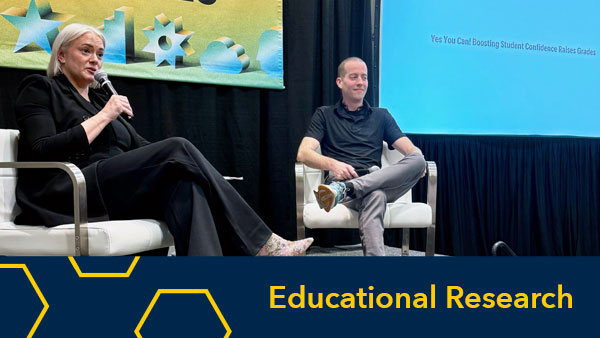Deirdre Lee, Communications Writing Fellow
With 19 schools and colleges as well as 277 degree programs, the University of Michigan provides a diverse range of academic opportunities. Navigating through this expansive academic world can be challenging, but the navigation is simplified with the Academic Reporting Tools platform (ART 2.0) — now called Atlas.
David Nesbitt, Software Portfolio Manager at the Center for Academic Innovation, said renaming the tool to Atlas was done primarily to dispel confusion and better connect the name to the functions of the application.
“The name ‘Atlas’ fits our platform really well. It guides people in making decisions along their academic journey, helps students chart a path that will get them to their end destination, and helps faculty reflect on the path their students have taken,” he said.
August Evrard, Arthur F. Thurnau Professor of Physics and Astronomy, is the faculty champion and chief collaborator for Atlas and said the tool promotes student exploration and discovery.
He said the tool also streamlines access to information by providing windows to the truth about courses.
“I’ve always thought of this as exposing the curriculum landscape,” Evrard said.
This software application was first developed in the College of Literature, Science, and the Arts Information Technology Advisory Committee in 2006 and was later selected as one of the first three software projects supported by Academic Innovation in 2014. A year later, the ART 2.0 development team released a public interface with a U-M login to visualize course and academic program data in order to help students, faculty, and administration make informed decisions. Today, the data visualized in Atlas includes course enrollment, course evaluation results, grade distribution, recent instructors for the course, and incoming student level.
“For students in particular, ART 2.0 made a really tangible impact,” Nesbitt said. “The data on the platform allows them to see what other students said about a given course in evaluations, plan out their course-load to fit their bandwidth, learn what to expect in a course before starting it, and much more.”
Now, rebranded as Atlas, the platform’s features have been redesigned to improve user experience. The entire site, including the course, instructor, and major profile pages, have been visually updated to display information in a more cohesive, organized way.

Additionally, the student’s personalized dashboard shows courses, instructors, and majors that a student has saved on the platform, as well as other information such as courses completed throughout a student’s academic career, and most commonly taken courses in a student’s major.
Ben Hayward, Associate Director of Software Development and User Experience at Academic Innovation, said Atlas allows for more personalized decision-making.
“With Atlas we’re giving our users personalized tools to support discovery within that information and enable decision-making as they chart their pathways through the university,” he said.
Among the university’s 40,000+ graduate and undergraduate students at the Ann Arbor campus, approximately 80 percent of undergraduate students have used the Atlas platform throughout their academic careers.
Jonathan Sohn, Learning Experience Design Fellow at Academic Innovation, recently graduated from the College of Engineering and said Atlas was essential to mapping out his undergraduate pathway toward graduation.
He said the tool helped him to deconstruct a specific course to show elements such as student satisfaction, estimated workload, grade distributions, proportions of people who have taken the course and their majors, and course evaluations.
“[Atlas] … provides a lot of information that is very pertinent to students who are interested in taking [a] course and reveals a lot of things that you can’t get just simply off of the course guide,” Sohn said.
He said the tool helps students avoid underloading or overloading their academic schedules by providing realistic expectations for each course.
“I think the big thing is [Atlas] tells them something that’s a bit more reflective of reality about how these courses actually are,” Sohn said.
Kushank Raghav, Software Developer at Academic Innovation, said while working on Atlas, he focused on the improvements that would provide the most value for students by evolving the tool based on user feedback.
“One of the things I had in mind while rebranding Atlas was to closely knit software development with user-centered design,” he said. “For instance, a key component of rebranding was to improve the data quality of the application with a keen eye on the users’ needs.”
One important aspect of improving user experience is helping users recognize the name of the tool they’re using, which is one of the goals behind rebranding the platform to Atlas.
Lisa Emery, Senior Associate Registrar at the Office of the Registrar, hopes more students, advisors, faculty, and others will discover and use Atlas. She said the tool can be a useful source of information for students when determining potential classes to take or for instructors who want to examine the types of students enrolled in their courses.
“We’re hoping that the rebrand to Atlas will provide a name that students, faculty, and others on campus will recognize and understand,” Emery said.


